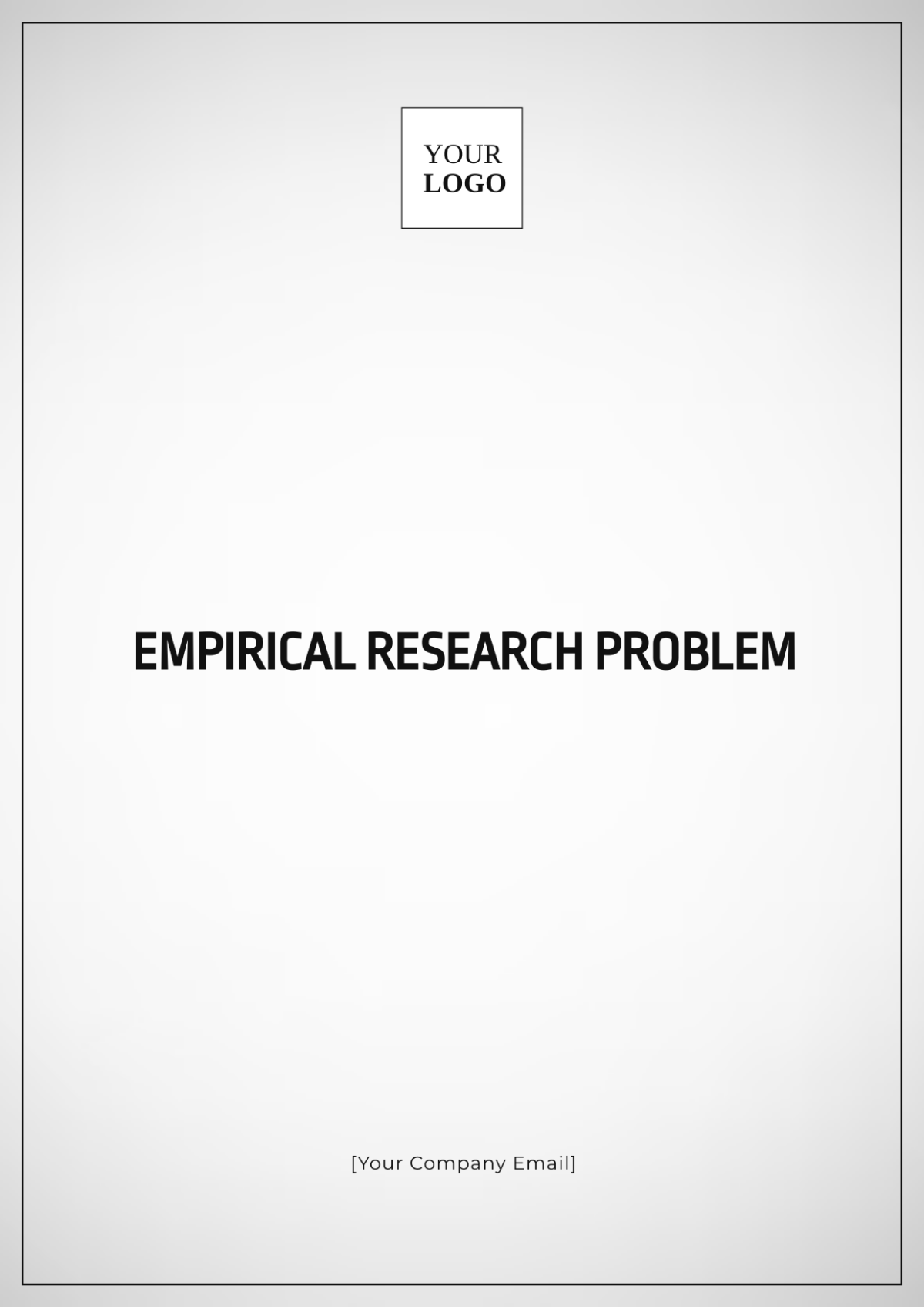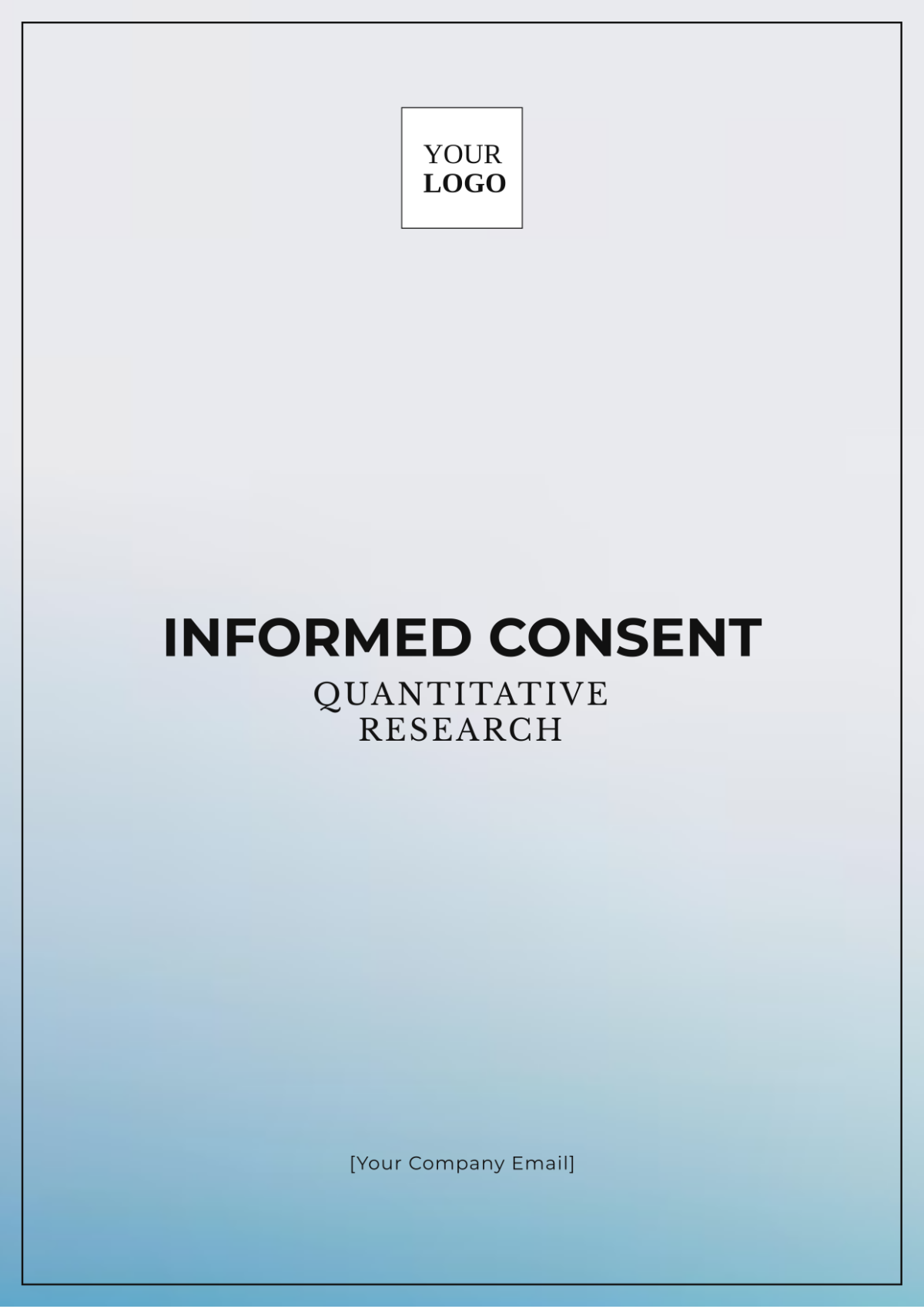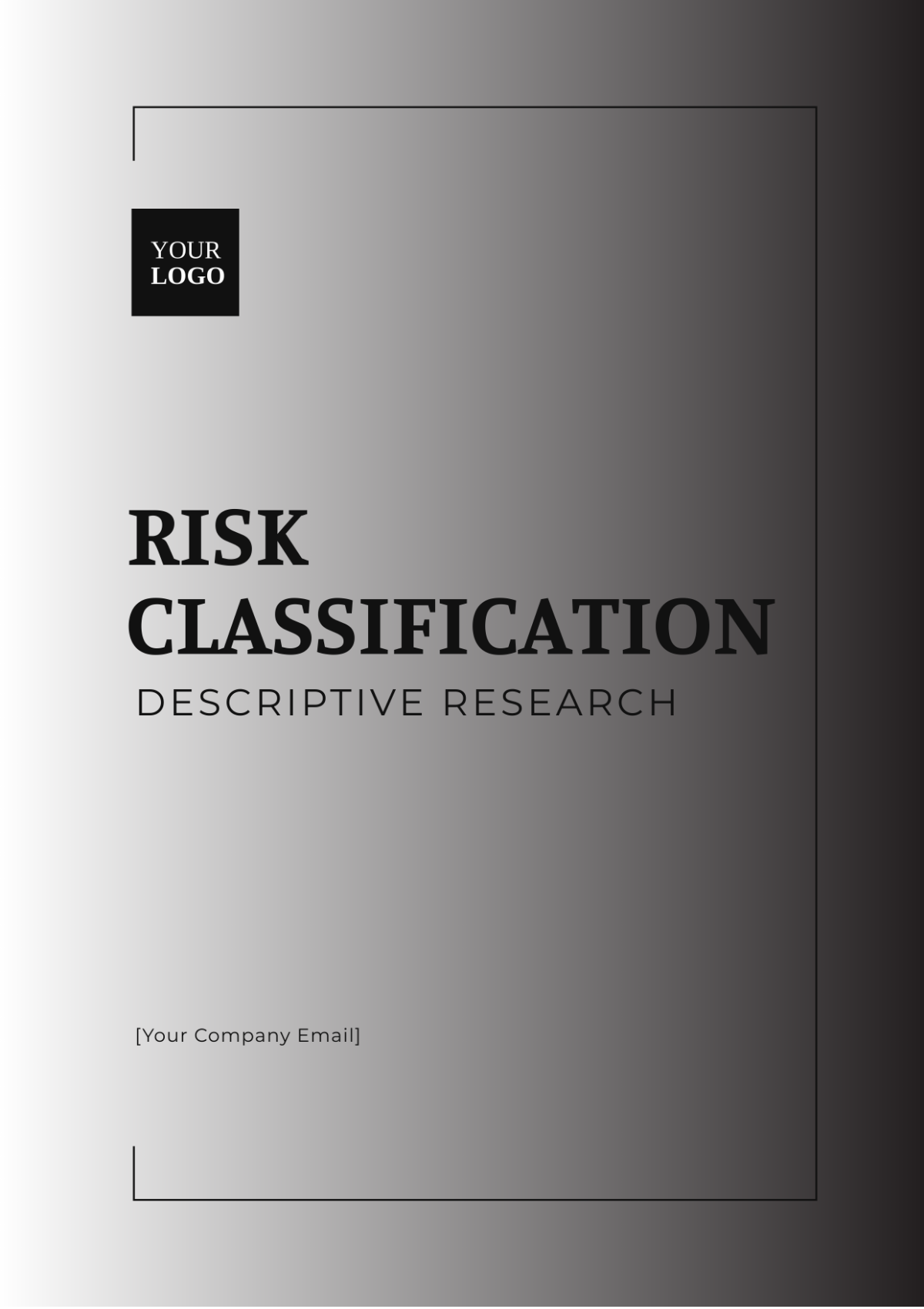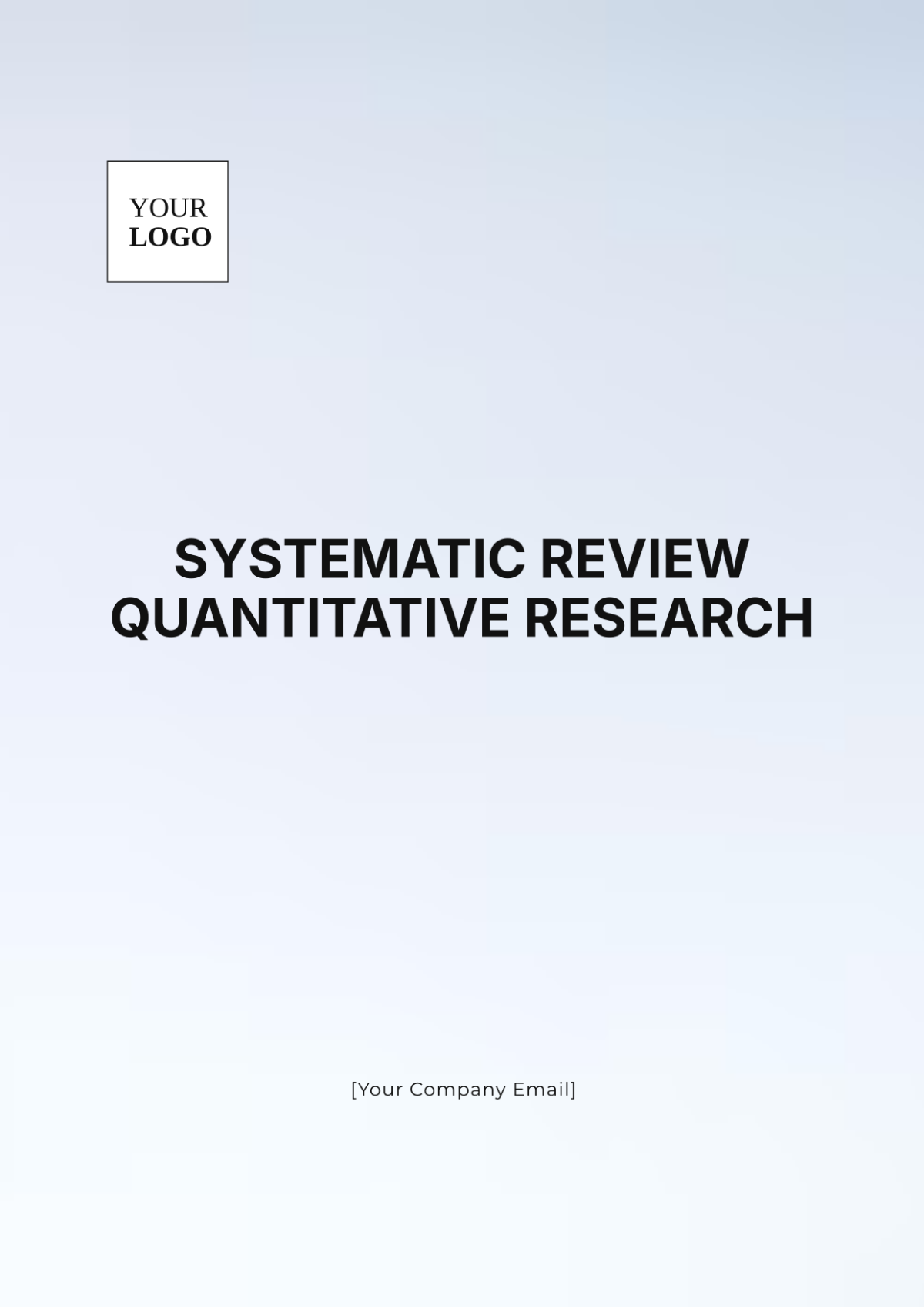Risk Classification Descriptive Research
Introduction
This research aims to identify, categorize, and describe various financial risks faced by organizations. The objective is to provide a comprehensive understanding of different financial risk categories, their characteristics, and implications to aid in effective risk management and decision-making.
Risk Categories
The following table categorizes different types of financial risks:
Risk Category | Definition | Examples |
|---|---|---|
Market Risk | Risk of losses due to fluctuations in market prices or rates. | Stock price volatility, interest rate changes. |
Credit Risk | Risk of losses due to a borrower’s failure to meet their obligations. | Loan defaults, credit card delinquencies. |
Liquidity Risk | Risk of not being able to meet short-term financial obligations. | Inability to sell assets quickly, cash flow issues. |
Operational Risk | Risk of loss resulting from inadequate or failed internal processes, people, or systems. | Fraud, system failures, legal issues. |
Interest Rate Risk | Risk of losses due to changes in interest rates affecting financial instruments. | Fixed-rate loan value fluctuations, bond pricing changes. |
Foreign Exchange Risk | Risk of losses due to fluctuations in exchange rates affecting foreign investments. | Currency value changes impacting international revenues. |
Methodology
To identify and analyze financial risks, the following methodology was employed:
Data Collection: Data was gathered through financial statements, market reports, and interviews with financial experts to ensure a comprehensive understanding of potential risks.
Risk Identification: Potential financial risks were identified through historical data analysis and risk assessment workshops. This step involved examining past incidents and trends to recognize patterns of financial risk.
Risk Categorization: Identified risks were categorized into specified financial categories based on their nature and source. This categorization helps in understanding the type and scope of each risk.
Risk Analysis: The likelihood and impact of each identified risk were analyzed using both quantitative and qualitative methods. This analysis aimed to determine the potential severity and frequency of each risk.
Impact Assessment: The potential consequences of each risk on financial performance and stability were assessed. This assessment involved evaluating how risks could affect organizational operations and financial outcomes.
Recommendations: Based on the analysis and assessment, strategies were developed to mitigate or manage identified financial risks. These recommendations focus on reducing the likelihood of risk occurrences and minimizing their impact.
Risk Analysis
4.1 Market Risk
Stock Price Volatility: Fluctuations in stock prices can affect the value of investments. To mitigate this risk, diversify investments across different asset classes and use hedging strategies such as options or futures contracts.
Interest Rate Changes: Variations in interest rates can impact borrowing costs and investment values. Mitigation strategies include using fixed-rate loans or interest-rate swaps to stabilize costs.
4.2 Credit Risk
Loan Defaults: When borrowers fail to repay loans, it can lead to significant losses. To manage this risk, conduct thorough credit assessments before extending credit and establish credit limits to control exposure.
Credit Card Delinquencies: Customers not making credit card payments can result in losses. Implement robust credit policies and monitor accounts closely to manage this risk effectively.
4.3 Liquidity Risk
Inability to Sell Assets Quickly: Difficulty in selling assets to meet obligations can create financial strain. Maintain a portfolio of liquid assets and manage cash flow efficiently to address this risk.
Cash Flow Issues: Insufficient cash flow to cover short-term liabilities can impact operations. Prepare cash flow forecasts and secure lines of credit to mitigate this risk.
4.4 Operational Risk
Fraud: Losses due to fraudulent activities can affect financial stability. Strengthen internal controls and conduct regular audits to prevent and detect fraud.
System Failures: Failures in IT systems can lead to operational disruptions. Invest in reliable IT systems and perform regular maintenance to minimize this risk.
4.5 Interest Rate Risk
Fixed-Rate Loan Value Fluctuations: Changes in market interest rates can affect the value of fixed-rate loans. Refinance loans at advantageous rates and use interest rate hedges to manage this risk.
Bond Pricing Changes: Interest rate fluctuations can impact bond values. Diversify bond investments and monitor interest rate trends to mitigate this risk.
4.6 Foreign Exchange Risk
Currency Value Changes: Fluctuations in exchange rates can impact the value of foreign investments. Use currency hedging strategies and diversify international investments to manage this risk.
Impact Assessment
The potential impact of identified financial risks is assessed based on their likelihood and severity. The following table summarizes the impact assessment:
Risk Category | High Impact Risks | Low Impact Risks |
|---|---|---|
Market Risk | Significant stock price drops, and major rate changes. | Minor market fluctuations. |
Credit Risk | Major loan defaults, significant credit card losses. | Minor credit issues. |
Liquidity Risk | Severe cash flow problems, inability to meet obligations. | Minor cash flow shortfalls. |
Operational Risk | Major fraud incidents, significant system failures. | Minor operational inefficiencies. |
Interest Rate Risk | Large fluctuations in fixed-rate loan values, substantial bond price changes. | Minor interest rate adjustments. |
Foreign Exchange Risk | Significant currency value shifts affect financial results. | Minor exchange rate fluctuations. |
Recommendations
To effectively manage the identified financial risks, the following strategies are recommended:
Market Risk: Diversify investments to spread risk across different asset classes. Use hedging strategies, such as options or futures, to protect against significant market fluctuations.
Credit Risk: Conduct thorough credit assessments before extending credit. Set credit limits and establish a robust credit monitoring system to manage and mitigate potential defaults.
Liquidity Risk: Maintain a portfolio of liquid assets that can be quickly converted to cash. Implement effective cash flow management practices and secure lines of credit to address short-term funding needs.
Operational Risk: Strengthen internal controls to prevent fraud and operational failures. Invest in reliable IT systems and conduct regular audits to ensure operational resilience.
Interest Rate Risk: Consider refinancing loans to lock in favorable interest rates. Use interest rate hedges, such as swaps or caps, to mitigate the impact of rate fluctuations on financial instruments.
Foreign Exchange Risk: Use currency hedging strategies, such as forward contracts or options, to manage exposure to exchange rate fluctuations. Diversify international investments to reduce reliance on any single currency.
Conclusion
Effective management of financial risks is crucial for maintaining organizational stability and performance. By systematically identifying, categorizing, and addressing various financial risks, organizations can enhance their ability to manage uncertainties and make informed decisions. Continuous monitoring and adaptation of risk management practices are essential for long-term success.

















































